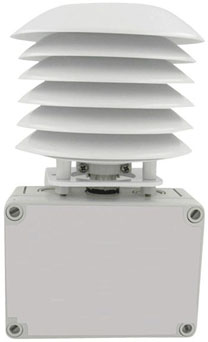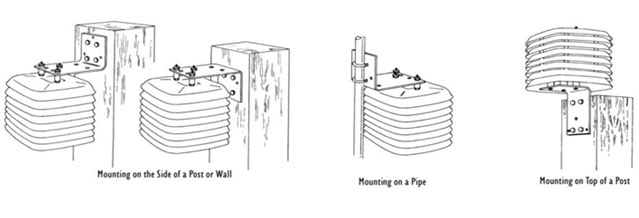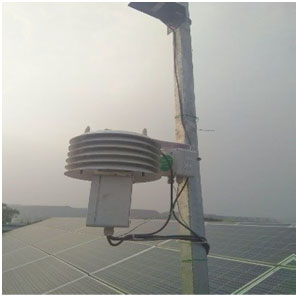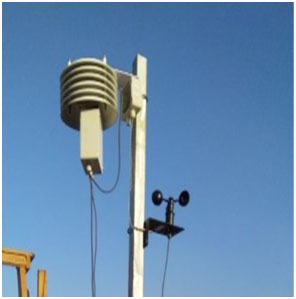Frequently Asked Questions
Not all sensors are built for harsh conditions. For outdoors, or industrial applications, always choose sensors with IP-rated enclosures in order to resist

At Logics PowerAMR, we understand how crucial accurate data is for solar PV monitoring and energy monitoring. That’s why our Ambient Temperature Sensor is designed with precision, durability, along with ease of installation in mind. Factory-assembled inside a shield, it delivers reliable readings without even being affected by direct sunlight or external heat sources.
This sensor plays an essential role in optimizing the performance of solar arrays. No matter if utilized for stations, or other outdoor monitoring systems. It provides consistent and accurate ambient temperature data, and helps improve system efficiency, supports better decision-making, and ultimately ensures compliance with industry standards. These sensors are built with UV-stabilized material, IP67-rated protection, along with high frequency (±0.3°C), the Logics PowerAMR sensors are actually engineered in order to perform in tough outdoor environments and maintain long-term reliability.
Ambient temperature actually has a direct impact on the performance of solar panels and inverters. Higher temperature often lessens the module efficiency, whereas sudden changes in temperature can affect system stability. With accurate data from our Ambient Temperature Sensor, solar operators get valuable insights in order to fine-tune their performance strategies.
In a complete IoT-based Solar Monitoring System, this data helps:
| The Solar Radiation Shield may be mounted in three orientations. | |
| On the side of a wooden post or a wall. | |
| On a metal pipe with outside diameter between 1 in. and 1-1/4 in. (25 mm and 31 mm) on top of a woodpost. |
When you integrate ambient temperature data into your Solar Power Plant Monitoring solution, you get higher efficiency, improve forecasting accuracy, and ultimately optimize long-term asset performance.
| Construction : | UV-stabilized white thermoplastic plates, aluminum mounting | Bracket, white powder-coated ,stainless-steel U-bolt clamp | |
| Plate Diameter : | 196 mm | Plate Height : | 110mm |
| Measuring Range : | 0 to 100 C | Accuracy : | 0.3 C |
| Sensors : Temperature : | RTD Pt100Ω Class A | IEC : | 60751 |
| Output : | 4-20mA ,2 wire Loop Powered ,Max load 600Ω at 24 vdc supply | Supply Voltage : | 12 to 26 VDC |
| Housing Electronics : | Poly carbonate watertight enclosure | Protection : | IP-67 |
| The Solar Radiation Shield may be mounted in three orientations. | |
| On the side of a wooden post or a wall. | |
| On a metal pipe with outside diameter between 1 in. and 1-1/4 in. (25 mm and 31 mm) on top of a woodpost. |



Factory-assembled inside radiation shield: Our sensors are pre-assembled for convenience, and ensure accurate readings and save installation time while reducing on-site setup errors.
High accuracy (±0.3°C): Provides reliable data that are essential for solar PV monitoring and weather applications, helping improve efficiency and performance analysis across systems.
Durable UV-stabilized materials: Engineered with long-lasting UV-resistant thermoplastic plates, ensuring stable performance and durability even in harsh, sunny outdoor conditions.
IP67 protection for outdoor use: TheThese sensors have waterproof enclosures that protect internal electronics from dust, rain, along with humidity, and ensure uninterrupted operation in challenging outdoor environments.
Easy installation with U-bolt bracket: Supplied stainless-steel U-bold allows secure mounting on pipes or posts, and this makes installation flexible, quick, and hassle-free for users.
Reliability and Precision: Our sensors are engineered for high accuracy, and ensure precise readings even in challenging conditions. This reliability truly makes it perfect for applications where exactly consistent data is essential for system performance and decision-making.
Rugged Design for Long-Term Outdoor Use: Built with durable, UV-stabilized materials, the sensor is actually designed in order to perform in all weather conditions. The sensor’s strong design ensures years of dependable operations without even frequent replacements, or even maintenance.
Easy Integration with Monitoring Systems: Engineered with long-lasting UV-resistant thermoplastic plates, ensuring stable performance and durability even in harsh, sunny outdoor conditions.
Backed by Technical Support and Datasheet Access: Along with a reliable product, we at Logics PowerAMR provide complete technical support and detailed datasheets. This ensures users can set up, operate, and ultimately maintain the sensor with confidence and ease.